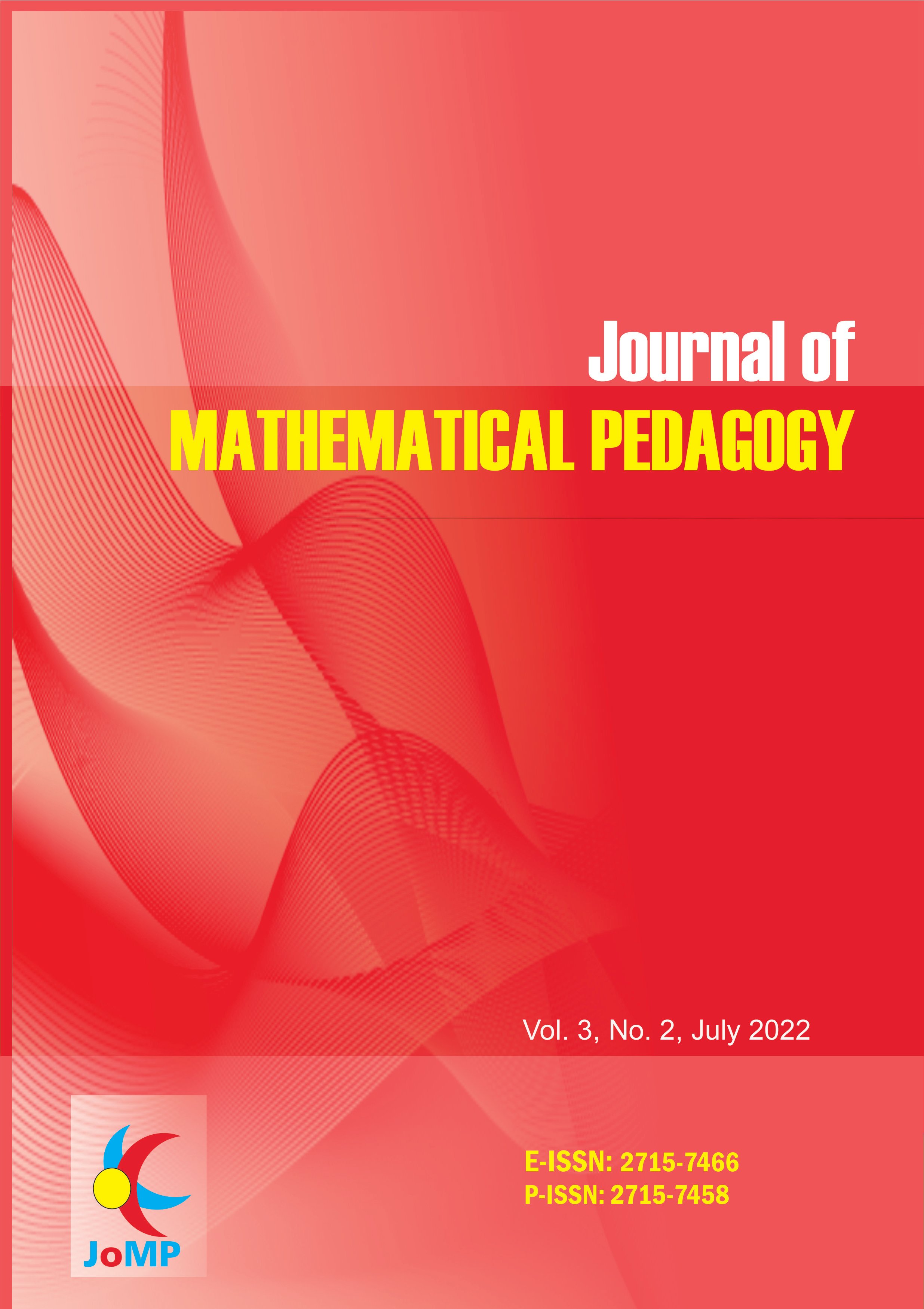Critical Thinking of Students with High and Low Mathematics Efficacy PISA Problem: A Case of Algebraic Task
DOI:
https://doi.org/10.26740/jomp.v3n2.p68-80Keywords:
Critical thinking, PISA Problem Algebra Content, Mathematics EfficacyAbstract
This study aims to describe students' critical thinking on PISA problems on algebra content in terms of high and low mathematics efficacy. This descriptive qualitative research involves two junior high school students with high and low mathematics efficacy in one of the junior high schools in Jombang Regency. Data collection techniques were carried out by administering a mathematics efficacy questionnaire, Algebraic Content PISA Problems (ACPP), and interview guidelines. Data analysis was based on indicators of critical thinking ability (interpretation, analysis, evaluation, inference, explanation, and self-regulation). From the results of data analysis, critical thinking in the interpretation aspect shows that only students with high mathematics efficacy can write what is known and asked. Likewise, in the analysis aspect, it shows that only students with high mathematics efficacy can create a mathematical model of the given problem. In the evaluation aspect, students with high and low mathematical efficacy can write complete problem-solving. Likewise, in the inference aspect, students with high and low mathematics efficacy were able to draw conclusions logically. Likewise, in the explanation aspect, students with high and low mathematical efficacy can write down the final results and provide reasons for the conclusions drawn. Meanwhile, in the aspect of self-regulation, students with high and low mathematics efficacy have conducted a review. Therefore, understanding students' critical thinking is very important for students and teachers to improve students' ability to solve PISA problems.
References
Ayuningsih, N. P. M., & Dwijayani, N. M. (2019). Pengaruh Model Pembelajaran Treffinger Berorientasi Kearifan Lokal Berbantuan Tugas Berjenjang Terhadap Self Efficacy Dan Kompetensi Strategis Matematika Siswa Sekolah Menengah Pertama (SMP). Kreano, Jurnal Matematika Kreatif-Inovatif, 10(1), 105-111.
Buskist, W., & Irons, J. G. (2008). Simple strategies for teaching your students to think critically. Teaching critical thinking in psychology: A handbook of best practices, 49-57.
Facione Peter, A. (2011). Critical Thinking: What It Is and Why It Counts. Measured Reasons and The California Academic Press, Millbrae, CA..
Johnson, Elaine. (2009). Contextul Teaching & Learning. Bandung: Mizan Media Utama.
Kurniawati, N. D. L., & Mahmudi, A. (2019). Pengembangan Perangkat Pembelajaran Geometri menggunakan Problem-Based Learning dengan Strategi Metakognitif Berorientasi pada Kemampuan Literasi Matematika dan Self-Efficacy Siswa SMP. S2 thesis, Program Pascasarjana. Universitas Negeri Yogyakarta.
Ningsih, W. F., & Hayati, I. R. (2020). Dampak Efikasi Diri Terhadap Proses & Hasil Belajar Matematika (The Impact Of Self-Efficacy On Mathematics Learning Processes and Outcomes). Journal on Teacher Education, 1(2), 26-32.
Nurazizah, S., & Nurjaman, A. (2018). Analisis Hubungan Self Efficacy Terhadap Kemampuan Berpikir Kritis Matematis Siswa Pada Materi Lingkaran. JPMI (Jurnal Pembelajaran Matematika Inovatif), 1(3), 361. https://doi.org/10.22460/jpmi.v1i3.p361-370
OECD, PISA Released Items-Mathematics. PISA OECD Publishing.
Pranitasari, D., & Ratu, N. (2020). Analisis Kesalahan Siswa Dalam Menyelesaikan Soal Matematika Pisa Pada Konten Change and Relationship. AKSIOMA: Jurnal Program Studi Pendidikan Matematika, 9(4), 1235. https://doi.org/10.24127/ajpm.v9i4.2685
Schleicher, A. (2019). PISA 2018: Insights and Interpretations. OECD Publishing.
Sugiyono, D. (2013). Metode Penelitian Kuantitatif, Kualitatif, dan Tindakan. Alfabeta Bandung.
Turay, A. K., Salamah, S., & Riani, A. R. (2019). The Effect of Leadership Style, Self-Efficacy and Employee Training on EmployeePerformance at the Sierra Leone Airport Authority. International Journal of Multicultural and Multireligious Understanding, 6(2), 760-769.
 Abstract views: 414
,
Abstract views: 414
, PDF Downloads: 437
PDF Downloads: 437





